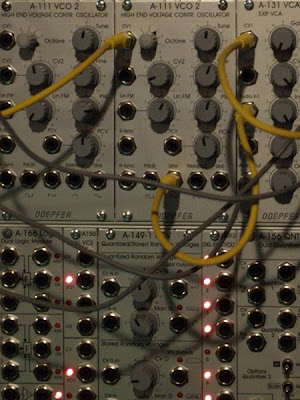
Imagine you’re driving in your car and your favorite song comes on the radio. You reach down to turn it up, but then your cell phone rings, so you turn it back down again so you can hear your phone conversation. In synth programming terms, you just MODULATED the AMPLITUDE of your radio.
MODULATION refers to the dynamic alteration of a synth parameter. Put more simply, modulation is what allows you to have sounds that change or evolve over time (even if it’s only over the course of a second or less). This is useful not only because it makes for more interesting sounds, but because it allows you to imitate the way “real world” instruments tend to work. Play a key on a piano and it doesn’t sustain, unchanging forever. The frequencies drop off from the bright attack to increasingly mellower tones. The amplitude (volume) of the sound starts out loud and eventually decays to nothing.
So what is it that actually controls this modulation and makes these types of changes possible? That's up to you. When you’re talking about modulation, you have to define what is going to do the modulating (called the MODULATOR or MOD SOURCE, or SOURCE), and what parameter is going to be modulated (usually called the DESTINATION or TARGET). Additionally, if your synth allows it, you need to define whether the modulator will modulate the parameter by a positive amount (increasing the parameter value relative to its current value), or a negative amount (decreasing the parameter value).
What you have available to you to assign as a modulation source/destination depends on what synth you’re using. Some very simple synths may only allow you to use the mod wheel to add modulation in the form of vibrato on the oscillators. At the other extreme, well-appointed modular synths, will allow you to modulate virtually any parameter with any other parameter. Most synths fall somewhere in the middle, allowing you to assign a dozen or so different modulators to a few dozen different synth parameters. Regardless of these differences, the principle itself is always the same: a source modulates a destination via a positive or negative value.
We're going to talk some more about modulation a couple posts from now, but first I want to introduce you to the two most common modulation sources you will run into in your synth programming adventures: the envelope and the LFO.





















1 comment:
These have been immensely useful. Even though I already know the basics, I never really took the time to understand the "why's" and "how's" of everything.
I really should sit down with some of my more commonly used VSTs and my Blofeld, and really get to know them inside and out.
Perhaps the next time I hit the studio I'll read some manuals, and write some patches from scratch.
Post a Comment